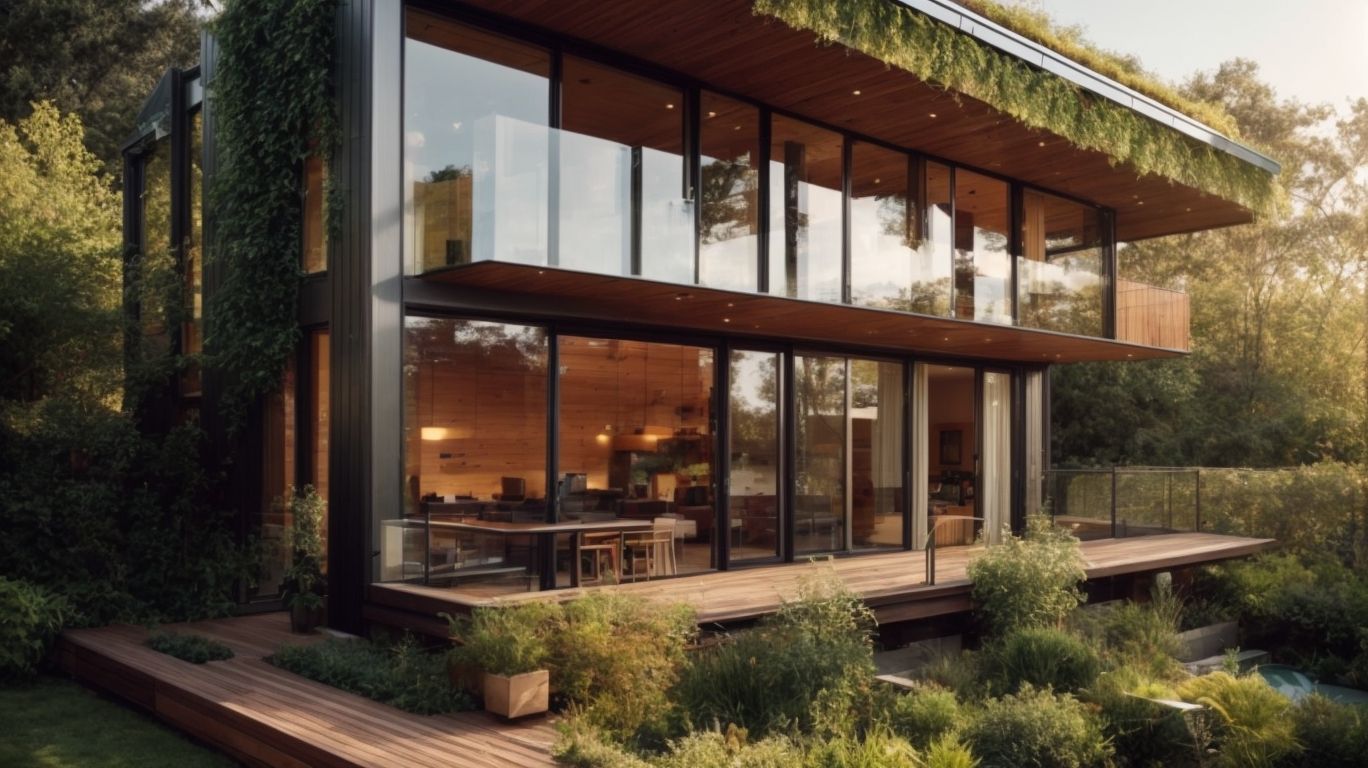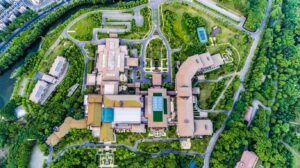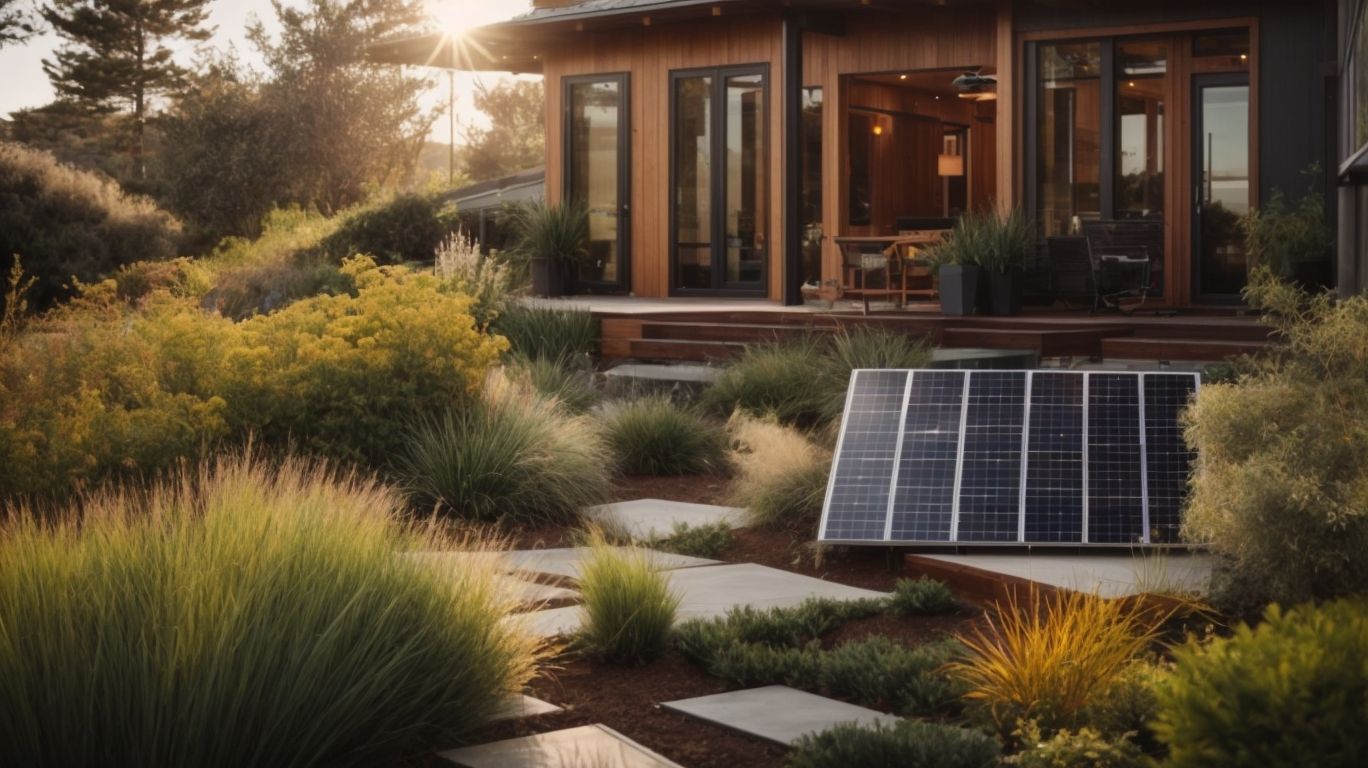
Revolutionizing Home Efficiency: Bay Area’s Move to Sustainable Architecture
Sustainable architecture is revolutionizing home efficiency in the Bay Area, setting a new standard for environmentally friendly design.
We explore the importance of sustainable architecture, its key elements such as energy efficiency and waste reduction, and the challenges in its implementation.
Discover how the Bay Area leads in sustainable architecture with green building codes, innovative design techniques, and community involvement.
Impressive examples of sustainable architecture in the Bay Area, like the Salesforce Tower and Sonoma Academy, are highlighted.
Learn how other cities can follow the Bay Area’s lead in sustainable architecture by implementing green building codes, educating the community, and collaborating with architects and builders.
Get inspired by the innovative and eco-friendly designs shaping the future of architecture!
What Is Sustainable Architecture?
Sustainable architecture represents a revolutionizing approach to building design that prioritizes environmental responsibility, energy efficiency, and the use of eco-friendly materials.
This innovative concept focuses on creating structures that minimize the negative impact on the environment while optimizing resource efficiency. By incorporating principles of energy efficiency and green building practices, sustainable architecture aims to reduce carbon footprint, conserve natural resources, and enhance the overall well-being of occupants.
Emphasizing the importance of long-term sustainability, this design philosophy considers factors such as site selection, renewable energy integration, and water conservation strategies to promote environmentally conscious designs and construction methods.
How Is It Different From Traditional Architecture?
Sustainable architecture differs from traditional architecture by incorporating eco-friendly materials, emphasizing energy conservation, and prioritizing minimal environmental impact.
In sustainable architecture, design principles often revolve around maximizing natural light and ventilation to reduce the need for artificial lighting and heating, thus lowering energy consumption.
Construction methods in sustainable architecture focus on minimizing waste during building processes and utilizing renewable energy sources such as solar panels or wind turbines.
The material choices in sustainable architecture lean towards recycled, repurposed, or locally sourced materials to reduce carbon footprint and support local economies.
These aspects collectively make sustainable architecture not just a style choice, but a conscious effort towards a greener and more sustainable future.
Why Is Sustainable Architecture Important?
Sustainable architecture holds paramount importance due to its significant contributions to reducing environmental impact, promoting energy savings, and mitigating the effects of climate change.
By integrating principles of sustainability into the design and construction process, sustainable architecture not only focuses on the immediate environmental benefits but also plays a crucial role in fostering a culture of responsible resource management and long-term resilience. From utilizing renewable materials to incorporating energy-efficient technologies, these innovative approaches not only reduce carbon footprints but also inspire a shift towards more sustainable living practices. In the realm of urban planning, sustainable architecture serves as a cornerstone for creating vibrant, eco-friendly communities that prioritize well-being and harmony with nature.
What Are The Benefits Of Sustainable Architecture?
The benefits of sustainable architecture are manifold, including adherence to energy efficiency standards, LEED certification recognition, and the implementation of green roofing practices.
Energy efficiency achievements in sustainable architecture contribute significantly to reduced energy consumption, leading to lower utility costs and a smaller carbon footprint. Buildings that meet LEED certification criteria are recognized for their environmental responsibility and resource efficiency. Green roofing innovations not only enhance insulation and lower energy usage but also promote biodiversity and mitigate urban heat island effect. Together, these elements make sustainable architecture a leading solution for eco-friendly and cost-effective building practices.
What Are The Key Elements Of Sustainable Architecture?
The key elements of sustainable architecture encompass energy-efficient design, utilization of renewable energy sources, and a commitment to eco-conscious design principles.
Energy-efficient design in sustainable architecture aims to reduce energy consumption through features such as passive solar design, proper insulation, and efficient lighting systems. Integrating renewable energy sources like solar panels, wind turbines, and geothermal systems further enhances a building’s sustainability. Eco-conscious design strategies involve using environmentally friendly materials, incorporating green spaces, and optimizing natural ventilation for improved indoor air quality and thermal comfort. By incorporating these components, sustainable architecture seeks to minimize environmental impact while creating healthy, energy-efficient living environments.
Energy Efficiency
Energy efficiency is a cornerstone of sustainable architecture, encompassing passive design strategies, advanced energy management systems, and substantial energy savings.
Passive design techniques play a crucial role in establishing energy-efficient buildings. By utilizing principles such as optimal building orientation, natural lighting, and ventilation, architects can reduce the need for excessive heating and cooling, thereby lowering overall energy consumption. Integrating energy management systems allows for the monitoring and optimization of energy usage in real-time, contributing to increased efficiency. Ultimately, the adoption of these practices not only leads to significant economic savings for building owners but also helps in reducing greenhouse gas emissions and mitigating the environmental impact of construction and operation.
Use Of Renewable Resources
The use of renewable resources in sustainable architecture involves integrating green energy solutions like solar panels to foster sustainable development and reduce reliance on non-renewable sources.
By utilizing solar panels, buildings can harness energy from the sun to power various systems, reducing their carbon footprint and decreasing their overall energy costs. Implementing renewable energy sources not only benefits the environment by lowering greenhouse gas emissions, but also creates a more resilient and self-sufficient infrastructure. In sustainable architecture, the incorporation of solar panels offers long-term advantages such as energy independence and increased property value, making it a win-win solution for both the environment and building owners.
Water Conservation
Water conservation is a vital aspect of sustainable architecture, promoting practices that enhance indoor air quality, support sustainable living, and reduce water wastage.
By incorporating water-saving measures within architectural designs, buildings can significantly decrease their environmental impact. Conserving water not only benefits the natural ecosystem but also contributes to cost savings and resource efficiency. Sustainable architecture emphasizes the importance of utilizing water-efficient fixtures and systems to minimize water consumption.
Promoting awareness about the significance of water conservation in architectural projects encourages individuals to adopt sustainable living practices. Implementing strategies like rainwater harvesting and greywater recycling further highlight the positive impact that water-saving measures can have on the environment.
Waste Reduction
Waste reduction forms a critical component of sustainable architecture, advocating for green construction practices and sustainable design approaches to minimize environmental impact and promote responsible resource management.
By integrating waste reduction strategies into architectural projects, designers and builders can contribute significantly to creating eco-friendly structures that prioritize sustainability. Green construction practices such as utilizing recycled materials, implementing energy-efficient systems, and incorporating natural lighting not only reduce waste but also lower carbon emissions. Sustainable design principles focus on enhancing the efficiency and longevity of buildings while reducing their negative environmental footprint. Responsible resource management involves carefully selecting materials, optimizing construction processes, and considering the life cycle of the building to ensure minimal waste generation and maximum efficiency.
What Are The Challenges In Implementing Sustainable Architecture?
Implementing sustainable architecture faces challenges such as cost considerations, overcoming resistance to change, and addressing limited awareness about eco-conscious design practices.
These obstacles can create significant hurdles for architects and developers when striving to incorporate sustainable elements into their projects. The financial aspect is often a major concern, as sustainable materials and technologies can be more expensive upfront, even though they provide long-term benefits. The construction industry has traditionally been slow to embrace new trends, resulting in resistance to change when it comes to adopting sustainable practices.
Educating stakeholders and promoting the value of sustainable architecture can help overcome these barriers and pave the way for a more environmentally conscious built environment.
Cost
Cost is a significant challenge in sustainable architecture, involving adherence to energy efficiency standards, certification costs, and compliance with green building council regulations.
Opting for energy-efficient materials and technologies is pivotal in meeting stringent standards, but can also escalate project costs. Obtaining green building certifications like LEED or BREEAM incurs additional expenses for documentation and assessment. Ensuring compliance with varying regulations set by local authorities demands meticulous planning and sometimes costly modifications to the design. Balancing these financial aspects while aiming for sustainability requires a strategic approach and a deep understanding of the long-term benefits of sustainable practices.
Lack Of Awareness
The lack of awareness presents a hurdle in sustainable architecture, necessitating community involvement, urban planning strategies, and initiatives to foster sustainable living practices.
Without a deep understanding of the principles and benefits of sustainable architecture, communities may miss out on opportunities to minimize environmental impact and create healthier spaces.
By engaging with local residents and involving them in the decision-making process, urban planners can incorporate sustainable design elements that not only benefit the environment but also enhance quality of life.
Education initiatives focused on sustainable living can empower individuals to make informed choices about energy consumption, materials usage, and waste management, contributing to a more sustainable future for all.
Resistance To Change
Resistance to change poses a barrier in sustainable architecture, requiring advocacy for sustainable development, climate change mitigation efforts, and strategies to encourage adoption of eco-friendly practices.
Engaging stakeholders in meaningful conversations and educational campaigns can play a vital role in shifting mindsets towards embracing sustainable design principles. By emphasizing the long-term benefits of eco-friendly construction, such as reduced carbon footprint and energy efficiency, individuals can be more receptive to change.
Government policies and industry regulations also play a significant role in driving sustainable practices within the architectural sector. Encouraging innovation and collaboration among architects, engineers, and builders can lead to groundbreaking, environmentally conscious projects that set new standards for the industry.
How Is The Bay Area Leading The Way In Sustainable Architecture?
The Bay Area sets a precedent in sustainable architecture through the enactment of stringent green building codes, collaboration with the Green Building Council, and adherence to environmentally conscious building regulations.
These initiatives not only position the Bay Area as a leader in sustainable construction practices but also showcase its dedication to reducing environmental impact and promoting eco-friendly designs. By integrating features such as rainwater harvesting systems, energy-efficient heating and cooling systems, and solar panels, buildings in the Bay Area are exemplars of innovative and environmentally responsible architecture. Through ongoing partnerships with organizations like the Green Building Council, the Bay Area continues to refine its strategies, staying at the forefront of sustainable building trends and technologies.
Green Building Codes
Green building codes in the Bay Area drive sustainable development initiatives, promoting eco-conscious design practices and ensuring compliance with environmental regulations.
These codes play a significant role in shaping the architectural landscape of the region by encouraging the use of energy-efficient materials and construction methods. By incorporating elements such as natural lighting, green roofs, and efficient water management systems, buildings in the Bay Area are not only reducing their environmental footprint but also improving the overall quality of life for residents. These codes drive innovation in the construction industry, pushing builders and developers to adopt more sustainable and environmentally friendly practices.
Innovative Design Techniques
Innovative design techniques in the Bay Area revolutionize sustainable architecture by prioritizing energy conservation, integrating urban planning strategies, and fostering creative solutions for environmental challenges.
These design approaches in the Bay Area go beyond traditional architectural concepts, aiming to create buildings that not only reduce energy consumption but also blend seamlessly with their surrounding urban landscapes. By incorporating elements such as green roofs, passive solar heating, and efficient insulation, architects are effectively minimizing the environmental impact of their structures. The seamless integration of these sustainable solutions into the existing city infrastructure demonstrates a thoughtful consideration for the long-term sustainability and resilience of the region.
Community Involvement
Community involvement is integral to the Bay Area’s sustainable architecture success, fostering sustainable communities, promoting energy management systems, and encouraging collective efforts for environmental conservation.
By actively engaging the local residents, architects, and builders in the decision-making process, innovative sustainable solutions are being implemented to address the region’s environmental challenges. The collaborative initiatives not only enhance the quality of life for individuals within the community but also contribute to the overall resilience and sustainability of the Bay Area. Through the adoption of energy-efficient practices and the integration of green technologies, these communities are setting a positive example for future development in the region, showcasing how a shared commitment to environmental stewardship can drive significant progress towards a more eco-friendly future.
What Are Some Examples Of Sustainable Architecture In The Bay Area?
The Bay Area showcases exemplary sustainable architecture in landmarks like Salesforce Tower, known for its incorporation of solar panels and energy-efficient design principles.
This iconic building stands out not only for its sleek design and towering height but also for its commitment to sustainability. The integration of solar panels on its façade allows the building to harness renewable energy and reduce its carbon footprint. The energy-efficient design principles implemented in the construction of Salesforce Tower help minimize energy consumption and promote environmental responsibility. These eco-friendly features serve as a testament to the Bay Area’s dedication to creating impactful structures that prioritize sustainability and contribute to a greener future.
Salesforce Tower
Salesforce Tower stands as a pinnacle of sustainable architecture in the Bay Area, achieving LEED certification recognition and featuring innovative green roofing solutions.
The LEED certification status of Salesforce Tower highlights its commitment to environmental sustainability, with a focus on energy efficiency and resource conservation. The building’s advanced green roofing technologies not only reduce urban heat island effect but also aid in managing stormwater runoff, promoting biodiversity, and improving air quality. These eco-friendly features contribute to a healthier environment for both inhabitants and the surrounding community, showcasing how sustainable design can have a positive impact on urban landscapes.
Exploratorium at Pier 15
The Exploratorium at Pier 15 exemplifies sustainable architecture in the Bay Area, featuring green roofing practices and promoting sustainable living concepts.
The incorporation of eco-friendly design principles at the Exploratorium extends beyond just the green roofing elements. Through its sustainable living initiatives, the venue aims to educate visitors on the importance of environmental consciousness and conservation. By integrating renewable energy sources like solar panels and utilizing recycled materials in its construction, the Exploratorium serves as a model for sustainable urban development. The blend of innovative design and sustainability not only reduces its environmental impact but also inspires others to embrace similar eco-friendly practices.
Sonoma Academy
Sonoma Academy embodies sustainable architecture principles in the Bay Area, integrating renewable energy solutions and contributing to sustainable development efforts.
The school’s commitment to environmental stewardship is reflected in its incorporation of solar panels and energy-efficient designs into its buildings, reducing its carbon footprint significantly. By utilizing rainwater harvesting systems and implementing green landscaping practices, Sonoma Academy showcases a holistic approach to sustainability. The campus prioritizes natural lighting and ventilation, creating a healthy and eco-friendly learning environment for its students and staff. The institution’s forward-thinking approach serves as a beacon of inspiration for other educational institutions looking to adopt sustainable practices.
How Can Other Cities Follow The Bay Area’s Lead In Sustainable Architecture?
Cities can emulate the Bay Area’s success in sustainable architecture by implementing green building codes, educating the community, and fostering collaborations with architects and builders to prioritize energy conservation.
By mandating the use of sustainable materials and energy-efficient designs through updated building codes, cities can ensure that new construction projects meet environmental standards.
Community education plays a crucial role in raising awareness about the benefits of sustainable architecture, encouraging individuals to make eco-friendly choices in their homes and workplaces.
Forming partnerships with industry professionals such as sustainability consultants and green technology suppliers can provide cities with valuable expertise and resources to support their sustainable development goals.
Implementing Green Building Codes
Implementing green building codes is a foundational step for cities to advance sustainable architecture, fostering sustainable communities, integrating urban planning strategies, and promoting efficient energy management systems.
Such codes play a vital role in ensuring that construction and development projects align with environmental standards, reducing carbon emissions and minimizing environmental impact. By incorporating green building codes, cities can stimulate innovation in sustainable design, encourage the use of renewable energy sources, and enhance the overall quality of life for residents. These regulations also support the creation of green jobs and contribute to long-term cost savings for both individuals and municipalities. The integration of green building practices in cities can serve as a model for neighboring regions, influencing broader sustainability initiatives and the adoption of eco-friendly technologies.
Educating The Community
Community education plays a vital role in promoting sustainable architecture, encouraging sustainable living practices, fostering awareness about eco-conscious design, and engaging residents in environmental conservation efforts.
By providing workshops, seminars, and informational sessions, community education initiatives aim to empower individuals to make informed decisions that align with sustainable principles. Through collaborative projects and interactive exhibits, residents are inspired to embrace environmentally friendly behaviors and innovative design solutions. This collective effort not only enhances the overall quality of life within the community but also contributes to the long-term preservation of our planet’s resources. Ultimately, community education serves as a catalyst for driving positive change towards a more sustainable and eco-friendly future.
Collaborating With Architects And Builders
Collaborating with architects and builders is essential for cities to enhance sustainable architecture, driving energy savings, fostering innovative design approaches, and ensuring the integration of eco-friendly practices.
Through effective collaboration, cities and developers can create buildings that not only minimize environmental impact but also provide healthier living spaces for occupants. By working closely with architects and builders, sustainable initiatives such as passive solar design, efficient insulation, and use of recycled materials can be seamlessly integrated into project plans. This collaboration helps in promoting sustainable practices that address climate change challenges and contribute towards creating more resilient and environmentally conscious communities.




No Comments